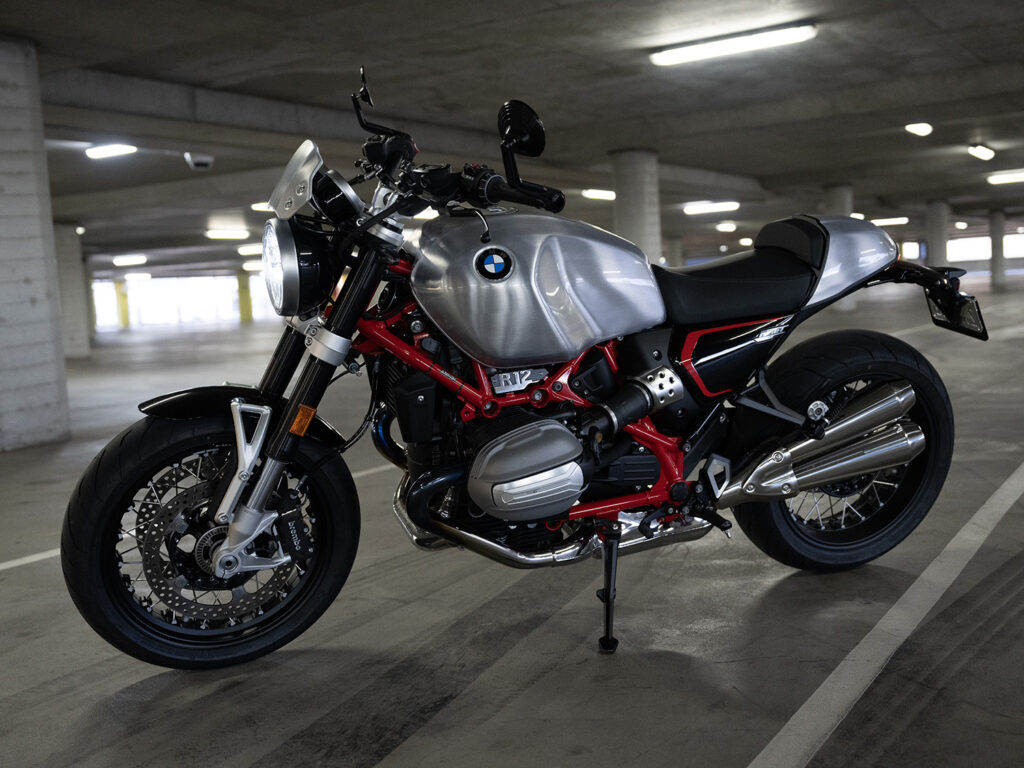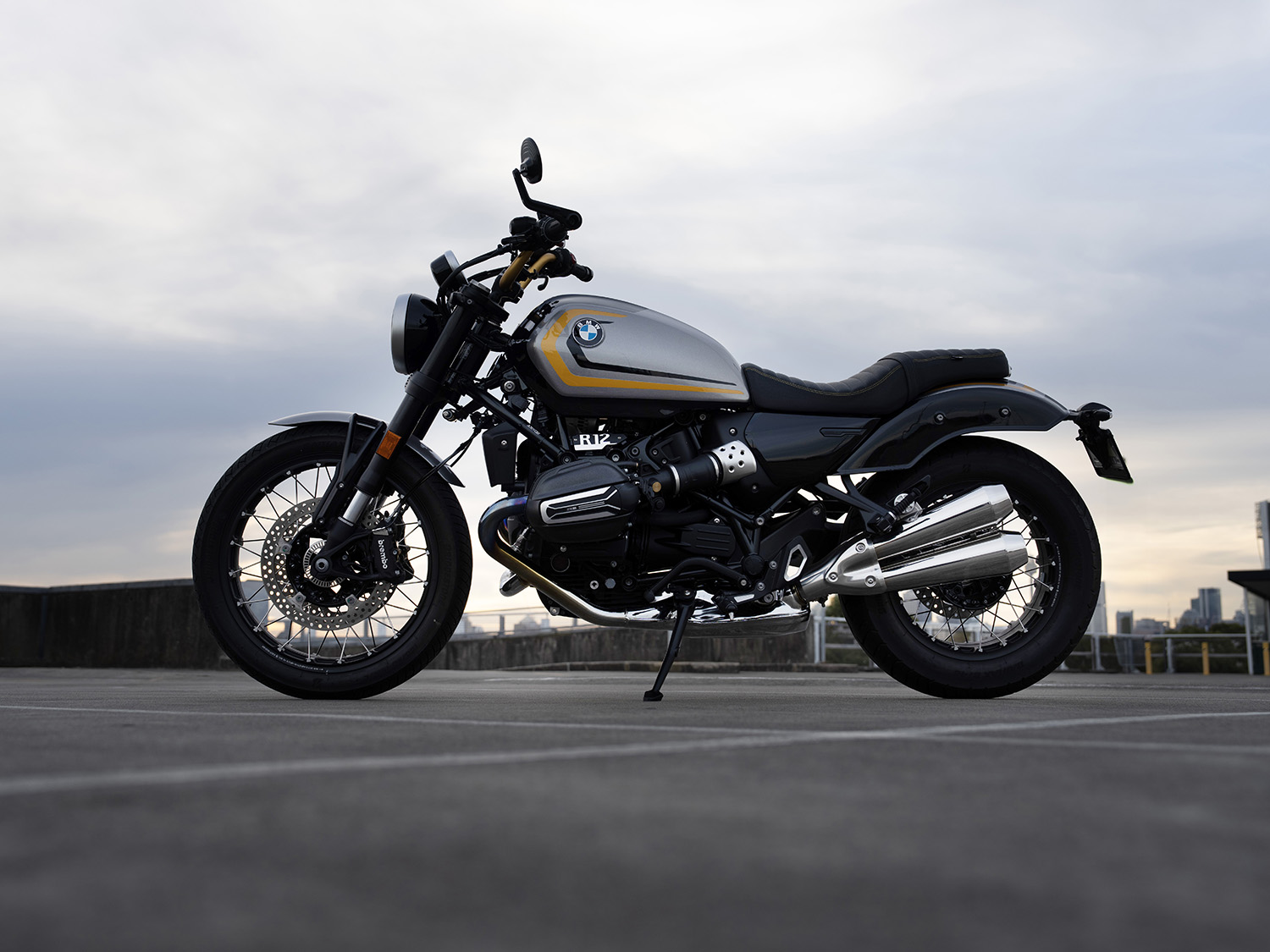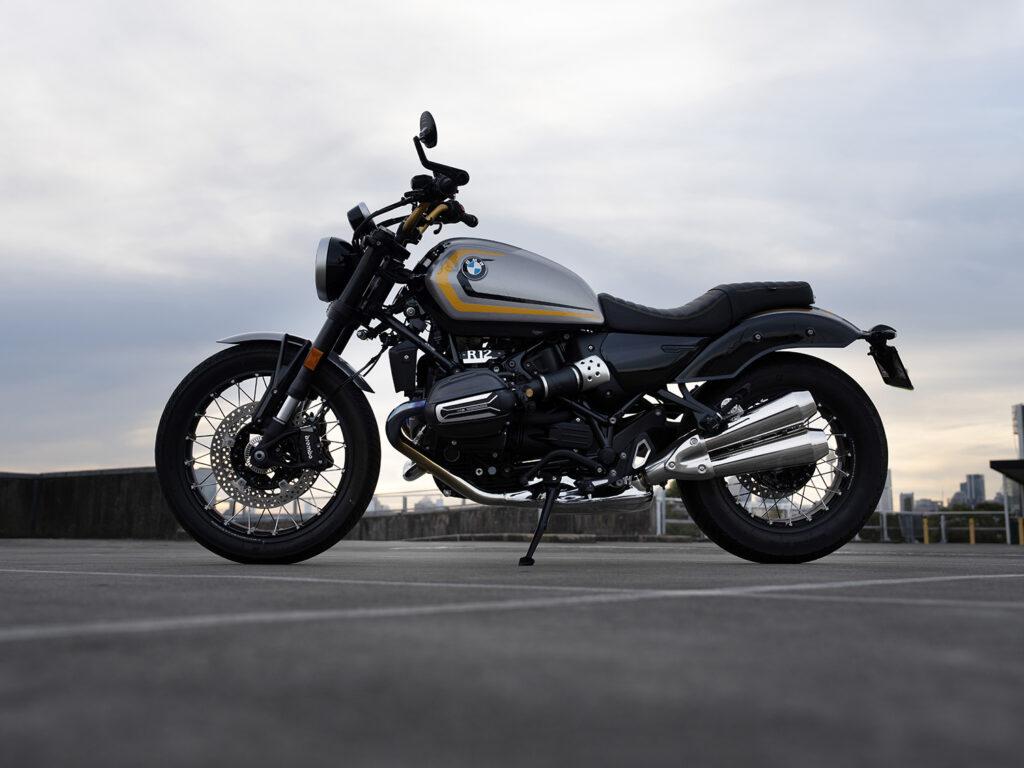
The BMW R nineT has been one of the most successful bikes the Bavarian brand has ever released. In the last ten years it’s sold over 106,000 examples worldwide and been the foundation of choice for many custom builds. But its days are finally numbered. The new models have been christened the BMW R12 nineT and R12, and we had the pleasure of putting them to the test over the past week.
Let’s get the names out of the way. The R nineT has always confused me, because from the name you’d think it was a 900cc bike. But no, it’s 1170cc, as are its successors. Which raises the question: why didn’t they call it the R12 to start with? I’m sure there were many meetings at the German offices about the numbers. Anyway, the new name might be a mouthful… but a very tasty mouthful at that.

Picking the bikes up from the local BMW dealership, I was given the R12 first. It is a good-looking motorcycle; this was the ‘factory custom’ Option 719 version. This is their premium version and 719 is the actual factory code for a customised motorcycle. (Yes, they love numbers.) It’s the more cruiser-looking bike, and straight away I loved the more relaxed riding position.
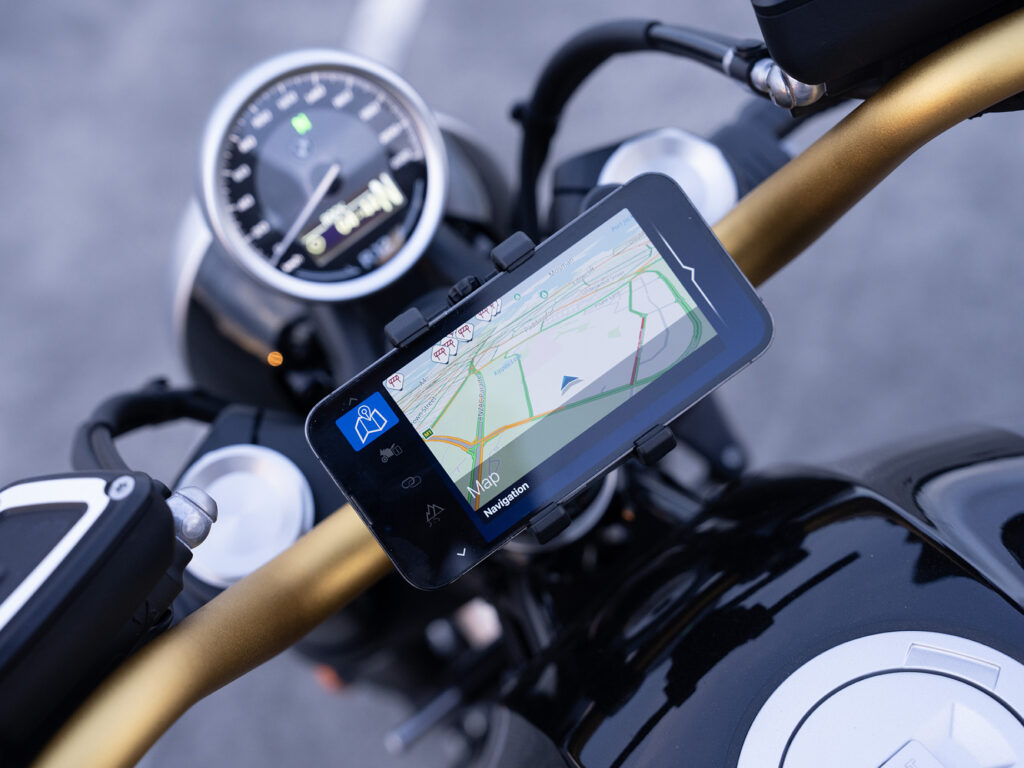
First, I was taken through the Bluetooth setup and had my phone linked with the BMW system in less than a minute. The BMW sales guy took me through the riding settings, and they were similar to the R18: Rock, Roll and Rain. He put it straight into Rock mode – the more dynamic sports mode – and the boxer engine fired and shook the whole bike. Its large cylinders sticking out the side took me some time to get used to. The R12 air-cooled boxer twin has 109 hp at 7000 rpm and 115 Nm of torque at 6500 rpm; the bike goes hard, with the highly responsive throttle giving you the feeling of unlimited power. There’s something very honest and raw about the grunting sounds of the bike and it immediately puts a smile on my face.
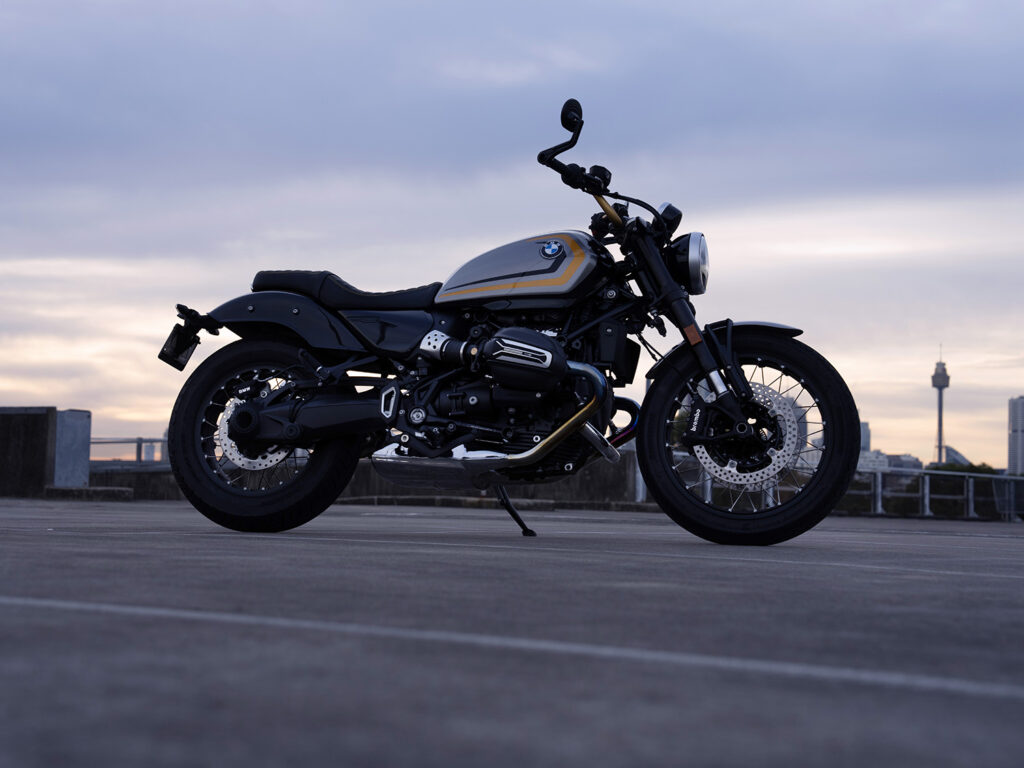
I leave the BMW dealership and stop at the first set of lights, and a guy winds down the window of his Mercedes C-class and says “nice bike, what is it?” I tell him it’s the “BMW R12 Option 719,” muffled through my full-face helmet. He gives me a strange look and drives off – I think he thought I gave him my phone number. It becomes clear over the next few weeks that both bikes get a lot of attention and there are a lot of BMW fan boys (and girls) out there.
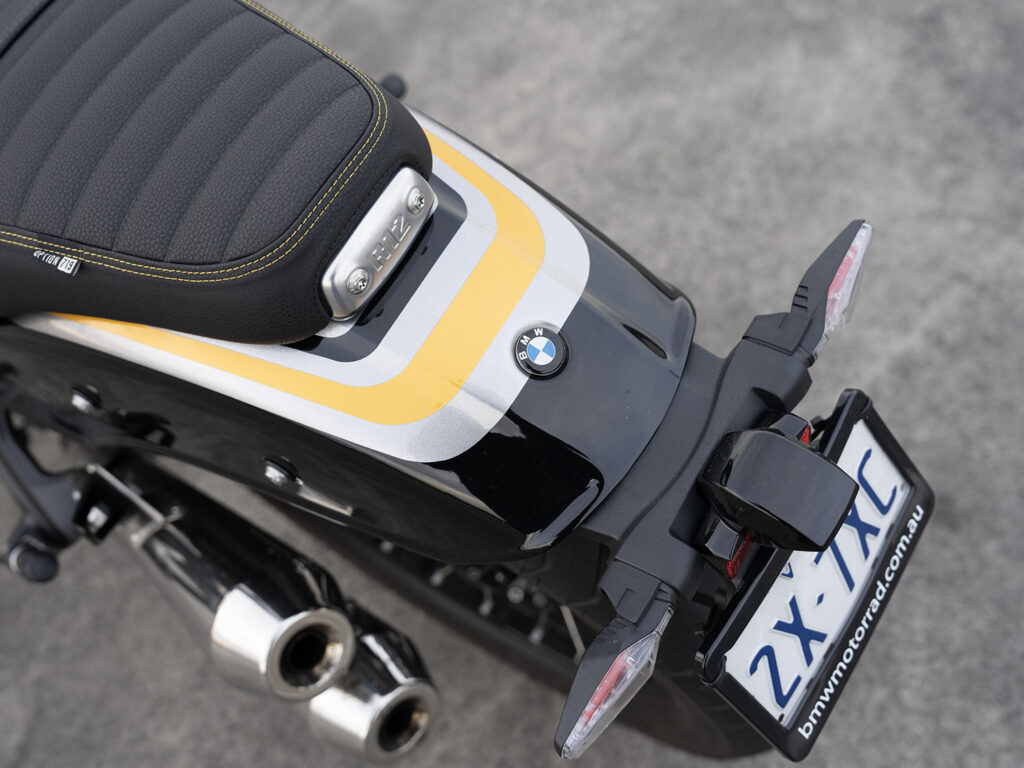
The riding position on the R12 is more like a cruiser. The footpegs are further forward and I find myself sitting more upright, which my cranky middle-aged lower back appreciates. The R12 I’m riding has the optional extra pillion seat, which looks super comfortable, and I can see it being perfect for those wanting to do longer rides on a more classic-styled bike.
The seat height is one of the lowest at 754 mm. Even the most vertically challenged of us can put their feet flat on the tarmac. It’s perfect, and on the road, I tell people I’m 5 foot 10 (probably more like 5 foot 9). The R12 nineT seat height is slightly higher in comparison, but still not that high at 795 mm – 10 mm lower than the old R nineT model.

The tank is a beautiful shape: think classic 70s ‘toaster’ tank, but slimmer and more stretched out. At 14 litres, it’s smaller than the R12 nineT’s, and made of steel in contrast to the roadster model’s 16-litre aluminium design. But the big question was: does it finally have a fuel gauge? The original R nineT never had one because of the way the tank was designed (so I’m told). After going through all the electronic functions on the bike, I couldn’t find the fuel level. I could see the PSI in each tire and the voltage of the battery – but no fuel level. I still find it hard to believe that there’s no way to incorporate a fuel gauge in the tank. I went on one long ride and was a long way from a gas station when the red fuel light came on, with the dashboard just showing the number 2. I originally thought I only had two miles or kilometres to find fuel. But then the number just kept rising as I rode. I was partly relieved but partly confused – how long have I got? I ended up getting to 16 before I found fuel. After returning the bike I asked the guy at BMW and he said you have 20 km on the reserve tank. So that was pretty damn close.
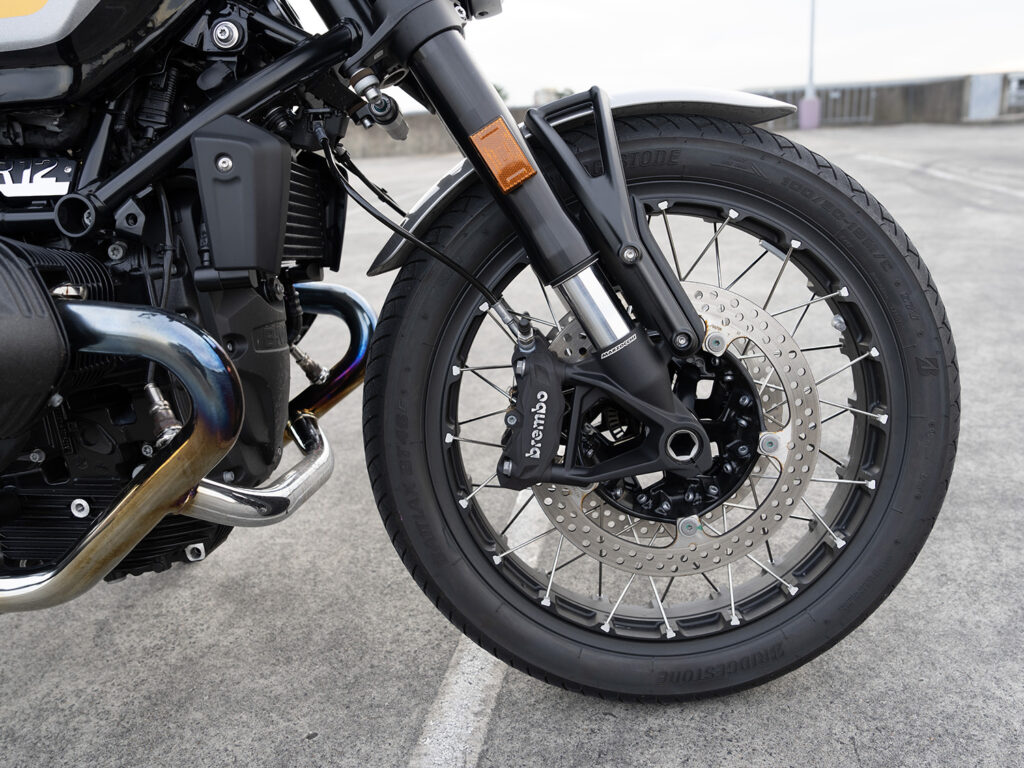
When it comes to the stopping power, it has Brembo brakes front and back – the quality you’d expect from a BMW in this price bracket. They are identical to the new R12 nineT’s, with 310 mm discs at the front and monoblock four-pot calipers, plus a 265 mm disc and two-pot stopper at the rear. There’s cornering ABS as standard, allied with engine braking control to help keep everything stable. The front is a 19-inch wheel and the rear is 16-inch, which is more cruisey.
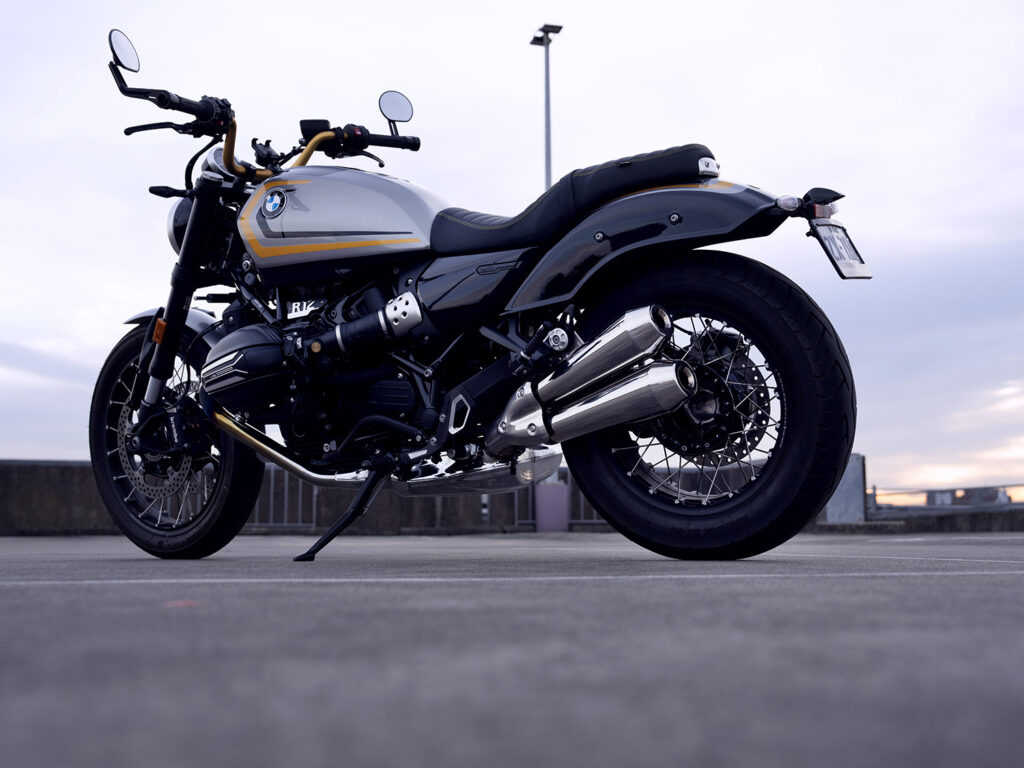
After riding the R12 for a few days, I was getting very comfortable on the machine. It’s such an easy bike to ride and handles surprisingly well for a heavier motorcycle. Although when I say heavy, I don’t mean obese – the bike weighs around 227 kg which is similar to the older model. The laid-back style makes it very appealing to those who don’t want to be hunched over and are happy to sit back and eat up the miles.
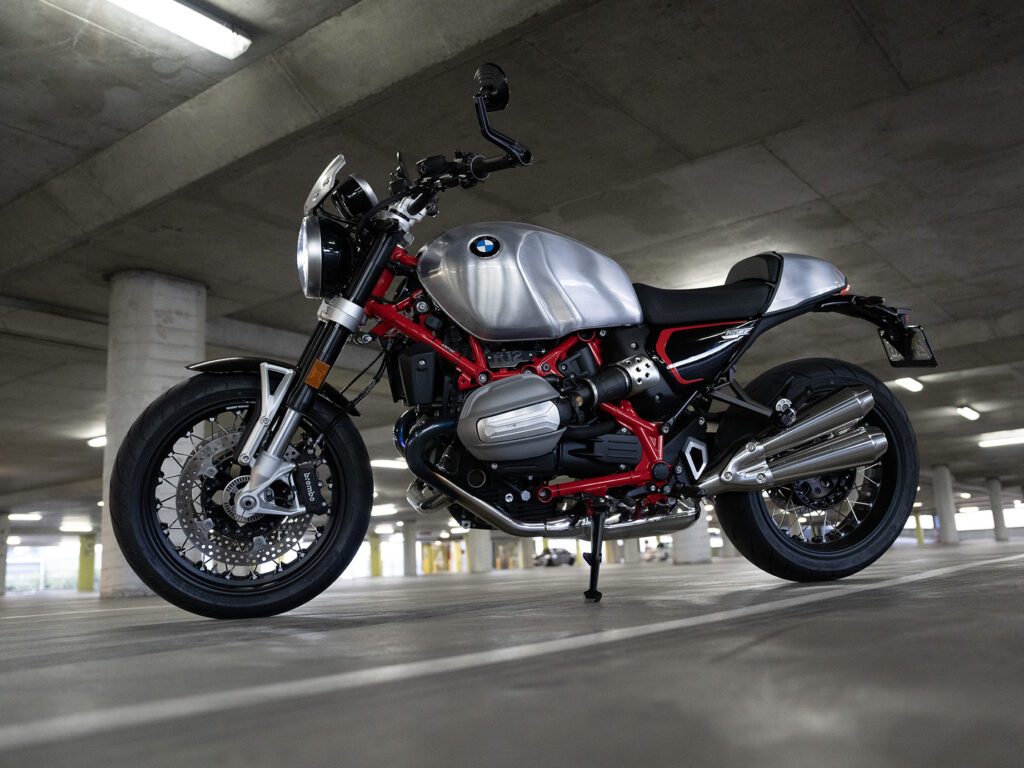
Dropping the R12 back to BMW HQ, I have a quick chat with the sales guy and tell him what I think of the bike. He says, “if you liked that, then you’ll love this,” pointing to the beautiful, red-framed, alloy-tanked R12 nineT Option 719. This thing is a stunner. In my humble opinion, it is probably the best looking stock bike you can buy off the showroom floor. I’ve always loved the original R nineT, but the air intake cutting into the lines of the tank never looked quite right to me. They have now fixed that issue and the airbox is positioned under the seat. This might sound like a small change but as styling goes it is a huge difference to my eyes.
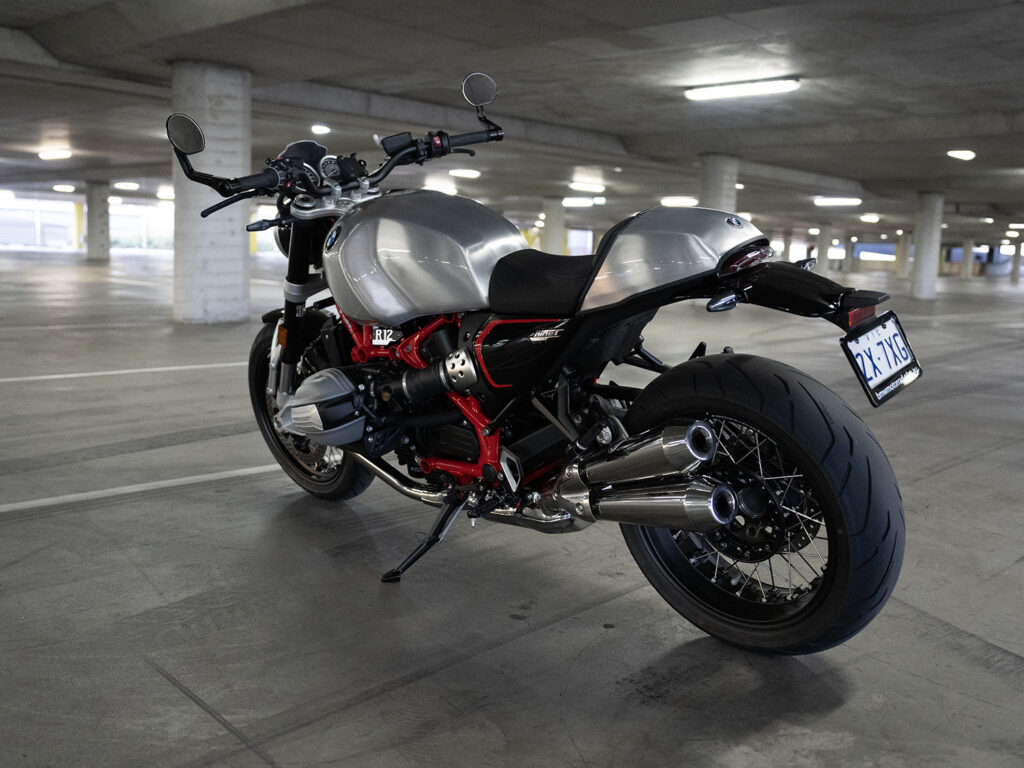
The bike feels foreign to me at first, and I need to get used to these new ergonomics – but it doesn’t take long to adjust. It feels like it’s not as powerful compared to the R12, but I check the settings and discover it’s in the basic mode. As I switch it into dynamic mode, the bike comes alive with that throaty grunt I have begun to love. It is amazing how different the bikes feel in each mode, but the dynamic mode is the one that fires up the bike and makes it feel possessed.
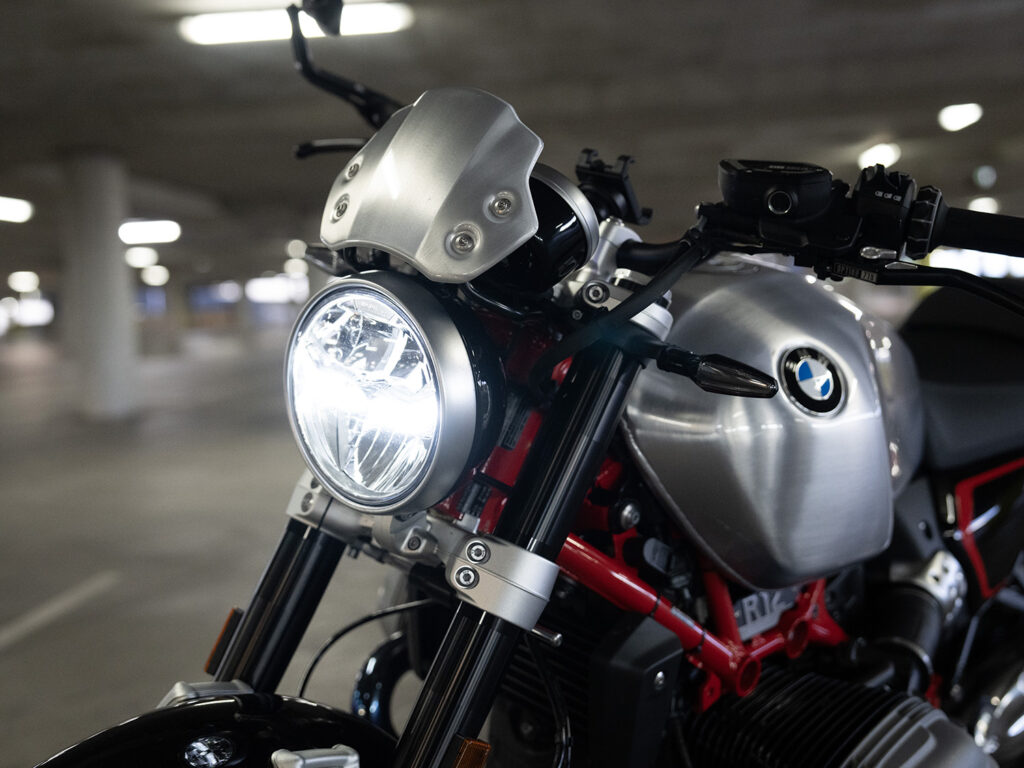
This is definitely more sporty. The footpegs are further back, the riding position more aggressive. I’m not immediately harassed by BMW fan boys as I leave the dealership this time, but it doesn’t take long. After about five minutes I stop at a set of red lights. The guy in the car next to me shouts out: “That’s a beauty. Is that an R nineT?” he asks. “It’s the R12 nineT Option 719,” I reply. “I have a GS and want one of them next,” he says. If I thought the R12 got a lot of attention, the R12 nineT attracts older men like happy hour at the local pub. You would not want to be riding this bike if you were in a witness protection program.

It’s not just the riding position: the bike rides differently compared with its cruising sibling, feeling more nimble and agile taking corners. The wheel sizing is different to the R12, 17-inch front and back, and they’re wrapped in Continental ContiRoad rubber, with a 120/70ZR17 front tyre and 180/55ZR17 back. Looking at the specs, the R12 nineT has more horsepower and is 7 kg lighter than the R12. On paper, the R12 nineT has 109 hp while the R12 has 95 hp.

Probably one of the biggest upgrades is the chassis. It uses a brand-new tubular steel main frame with a bolt-on subframe. This is good news to custom bike builders, making it a lot easier to customise the bike. It also has a freshly designed cast aluminium swingarm and paralever shaft drive, but the single pre-load adjustable shock has been placed at a more diagonal angle. Upfront it uses 45 mm upside down forks that are now adjustable. They did feel a bit stiff hitting the odd pothole, but were confidence inspiring when it came to handling and hitting twisties at speed.
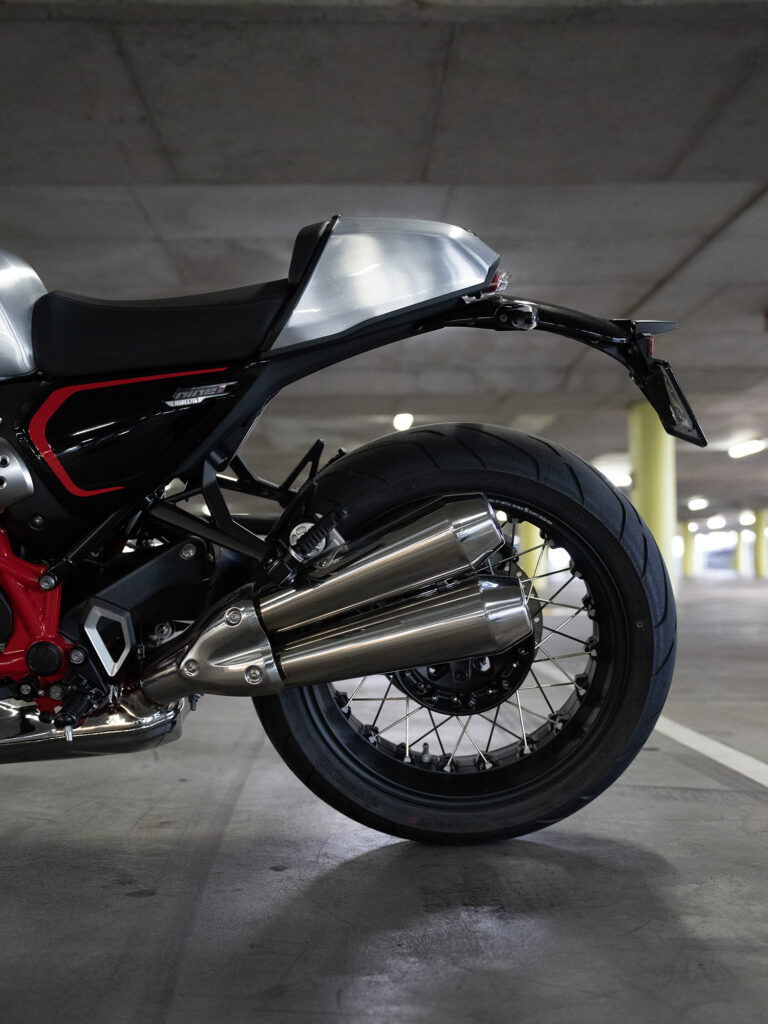
After riding the R12 nineT for a week it’s time to return this beautiful bike. It’s a sad day and I don’t want to give it back. The bike has clearly left an impression on me. It feels like a good mix of retro and modern. The engine is still a classic air-cooled boxer that has so much character and the pair of conical mufflers not only look great but deliver a robust, rich and bass-heavy tone.
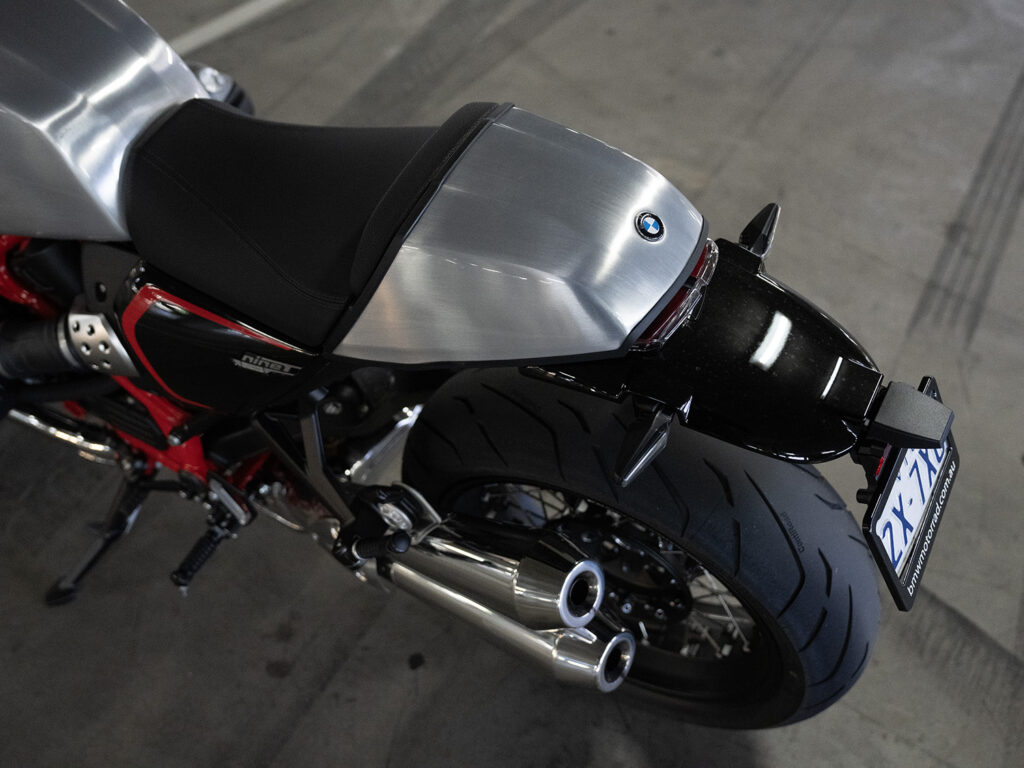
It also has all the modern technology and high-end components you’d expect from the clever Germans – except a fuel gauge. All these things come at a cost though. The starting price for the R12 nineT is $26,465 (AUS) or $16,295 (USD). Then if you want all the goodies on the Option 719 which I was riding, then you are looking at $33k. The pricing on the R12 cruiser is a little bit more palatable, starting at $22,575 (AUS) or $12,345 (USD). The Option 719 model which is featured in the photos with all the goodies is around $30,000 (AUS) or $13,999 (USD).
